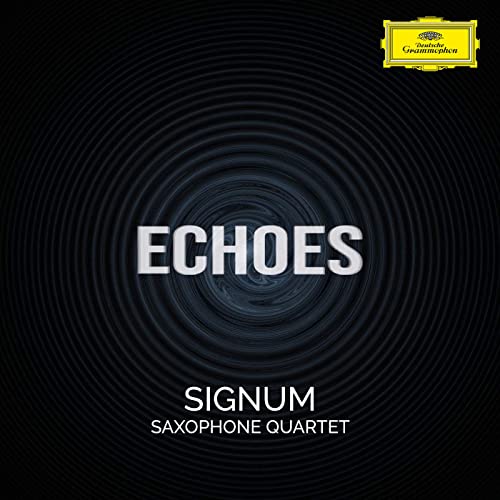
COLLECTIONS

John Dowland: Lachrimae Antiquae (Arr. Knoth) Max Richter: On the Nature of Daylight (Transc. for Saxophone Quartet and Cello) Philip Glass: String Quartet No. 3 "Mishima" - I. 1957: Award Montage (Arr. for Saxophone Quartet) Gabriel Fauré: Pie Jesu from Requiem, Op. 48 (Arr. Knoth) Peter Gregson: 4.2 Allemande (Arr. for Saxophone Quartet) Joep Beving: Ab Ovo (Arr. Knoth) Tomaso Albinoni: Adagio in G Minor (Arr. for Saxophone Quartet) Paul Hindemith: Trauermusik - IV. Choral (Arr. for Saxophone Quartet and Cello) Peteris Vasks: Songs of Love - IV. Then Time Stopped (Version for Saxophone Quartet) Guillermo Lago: Ciudades: Sarajevo (Bosnia and Herzegovina)
I've always considered the saxophone to be an extremely versatile musical instrument that can sound right at home within any type of musical setting. Of course, most people associate the sax with some of the great jazz musicians like Dexter Gordon, Phil Woods or John Coltrane. But consider this: Maurice Ravel's Bolero would not sound as good without its inclusion of soprano and tenor saxophones. The first movement of Ralph Vaughan Williams' 9th Symphony would not sound as haunting and enigmatic were it not for its use of two saxophones. Or The Old Castle from Mussorgsky's Pictures at an Exhibition just wouldn't sound the same were it scored for a different instrument rather than the alto saxophone. So based on the type of piece, saxophones are more than adequate for classical music.
For example, John Dowland's pure Renaissance harmonic design is perfectly suited for a saxophone quartet. Or when your dynamic blend is as tight as the members of the Signum Saxophone Quartet demonstrate in Max Richter's On the Nature of Daylight, a group of saxophones can sound like an old pedal-powered reed harmonium. At the other end of the spectrum is the liquid momentum they produce in the Philip Glass Quartet. Or just like The Old Castle, Joep Beving's haunting melody over a hypnotic pulse is something that stays with you all day. The only piece here that doesn't quite work for me is the Albinoni Adagio simply because saxophones cannot replace the warmth of string instruments.
The booklet notes point out: These four players continually subvert expectations of what a saxophone quartet should be. On stage, they stand in a curved line and perform mainly from memory. "They make the music almost visible," observed the Hamburger Abendblatt. "Musical logic and voice leading dictate who looks at whom and who steps forward when - seemingly without the artists having to think about it. They're like a single large organism." The four musicians Blaž Kemperle, Hayrapet Arakelyan, Alan Lužar and Guerino Bellarosa founded the Signum Saxophone Quartet in 2006. They are joined here, on their first e-album for Deutsche Grammophon, by soprano Grace Davidson (Fauré) and cellist Hila Karni (Richter and Hindemith).
Jean-Yves Duperron - January 2021